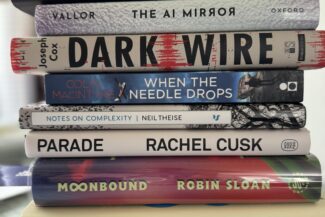Suno
https://www.suno.ai/
Creates complete songs from text prompts, including lyrics and vocals
Brev.ai
https://brev.ai/
AI Music Generator Free Online (stability AI)
AIVA (Artificial Intelligence Virtual Artist)
https://www.aiva.ai/
Specializes in creating original music for various media
Soundraw
https://soundraw.io/
AI-powered music generator with customizable parameters
Boomy
https://boomy.com/
Allows users to create and distribute AI-generated music
Amper Music
https://www.ampermusic.com/
Offers AI-powered music creation for content creators
OpenAI’s Jukebox
https://openai.com/research/jukebox
Generates music with vocals in various genres and artist styles
Mubert
https://mubert.com/
Generates continuous streams of AI-produced music
Beatoven.ai
https://www.beatoven.ai/
Creates royalty-free music tailored to video content
Loudly
https://loudly.com/
Provides AI-generated music tracks for various purposes
Endel
https://endel.io/
Generates personalized soundscapes for focus, relaxation, and sleep
MuseNet (by OpenAI)
https://openai.com/research/musenet
Deep neural network that can generate 4-minute musical compositions
Google’s Magenta
https://magenta.tensorflow.org/
Open-source research project exploring music and art generation
Amadeus Code
https://amadeuscode.com/
AI-powered songwriting assistant for melody creation
Aiva Music
https://aivamusic.com/
AI composer for creating original music
Splash
https://www.splashmusicai.com/
Produces custom music and sound effects for games and apps
this is a test: “i_was_served_an_ad_that_featured_an_ai_photo_of”. of turning spam into a honeypot










